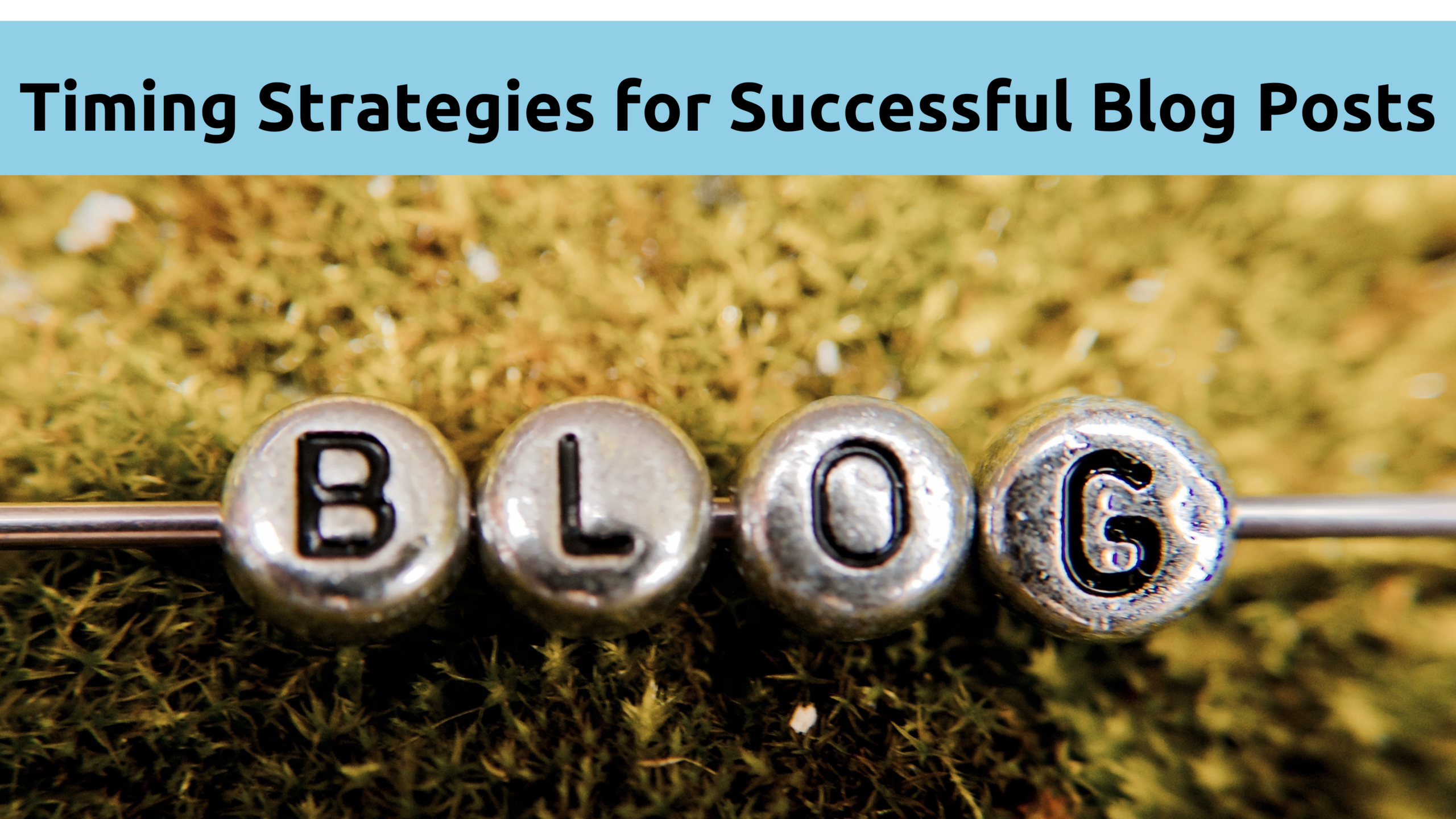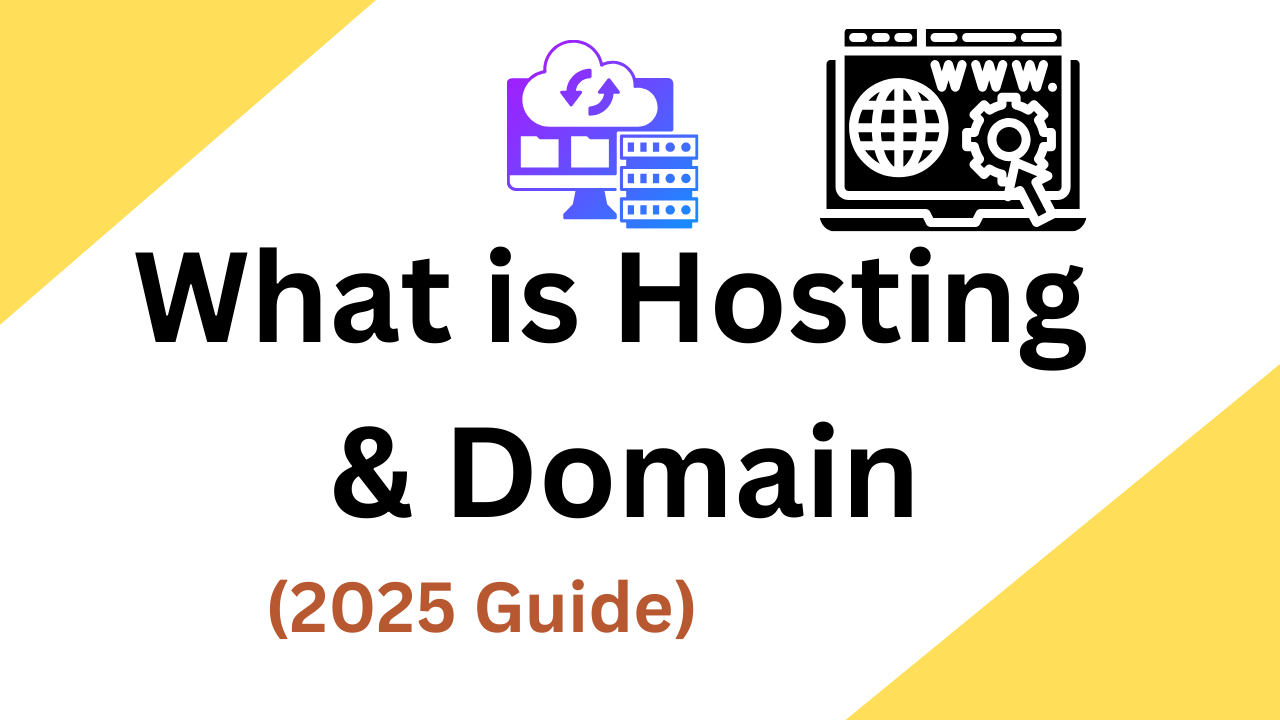Table of Contents
ToggleIdeal Timing and Day for Publishing Blog Content
Best Optimal Timing for Blog Posts, Creating impactful blog content is a cornerstone of effective online marketing. Among the myriad of factors that influence success, timing plays a pivotal role in maximizing your blog’s reach.
Strategic scheduling ensures your blog posts garner the attention they deserve by pinpointing the optimal day and time when your target audience is most receptive to quality content.
In this discussion, we’ll delve into the significance of timing within the blogging realm. We’ll dissect three essential considerations for determining the prime time to publish on your blog, aiming for peak page views, social engagement, and reader interaction. Let’s dive in! 🏃
Timing holds immense significance in the marketing landscape.
From Facebook to Instagram, the timing of your posts can make or break engagement metrics. The right moment can catapult your content to success, while mistimed efforts might result in disappointment.
But is there truly a universally optimal time to release a blog post, or is it a matter of sheer chance? Brace yourself for a controversial stance:
There’s no one-size-fits-all “best time” for publishing a blog post.
insert collective gasp
In fact, the concept of a singular “best time” might be a fallacy altogether.
cue disbelief
Before you join the ranks of incredulous content marketers, allow me to present some compelling arguments. More importantly, I’ll reveal a method to uncover the ultimate publishing schedule tailored precisely to you, your blog, and your audience.
The evolution of blogging from its nascent stages in the mid-90s to its current prominence underscores its indispensable role in contemporary content marketing strategies. Studies reveal that businesses prioritizing blogging are significantly more likely to achieve positive returns on investment.
A meticulously crafted blog serves as a multifaceted asset, fulfilling diverse objectives ranging from establishing thought leadership to guiding prospects through the sales funnel and enhancing search engine visibility.
Yet, amidst these triumphs, a perennial question persists: how frequently should one publish? And, crucially, what constitutes an optimal blog posting schedule?
This guide seeks to demystify blog post frequency, presenting four key inquiries to address before embarking on your blogging journey, along with insights into the ideal publication times.
Are you on the quest for the prime moment to share your articles, aiming to maximize engagement?
Discovering the ideal publishing time can be transformative, amplifying visitor numbers, fostering interaction, and potentially catapulting your content to viral status.
Join us as we unravel the best time to unveil a blog post and unveil methods to test and refine this crucial aspect of your website strategy.
Determining Your Blog Posting Frequency: Finding the Right Balance 🤔
The optimal frequency for publishing blog posts varies depending on your audience and objectives. For instance, if your aim is to boost click-through rates (CTR), you might lean towards a more frequent schedule.
But when is the ideal time to share your blog content? Well, that depends on several factors, and here’s why ⏰.
Your blogging strategy should align with your overarching goals. If brand awareness is your priority, a less aggressive publishing cadence might be more suitable.
However, in general, it’s advisable to maintain a consistent flow of content without sacrificing quality. Search engines tend to favor regularly updated blogs, so the more you publish, the better your chances of improving your search rankings.
At a minimum, aim to publish fresh content every week. Many successful blogs thrive on a schedule of around three posts per week. For instance, at the Themeisle blog, we’ve discovered that publishing four times weekly hits the sweet spot, though we remain flexible in adjusting our frequency as needed.
Nevertheless, quality should always take precedence. It’s preferable to release one exceptional post weekly than to churn out three subpar articles. Focusing on quality mitigates the risk of being drowned out in the vast sea of daily content and helps maintain reader engagement.
Once you establish a baseline frequency, it’s wise to monitor its impact on your objectives. Tools like Google Analytics can provide invaluable insights into your blog’s performance.
Since every blog is unique, experimentation is key. By testing different publishing schedules and closely analyzing results, you can pinpoint the frequency that best aligns with your niche and drives desired outcomes.
Best Time to Post on Your Blog: Three Key Considerations 🕰️
Every blogger, whether driven by passion or profit, desires an audience for their content. Yet, timing plays a crucial role in ensuring your posts reach the right eyes at the right moment. Here are three vital factors to weigh before hitting that Publish button:
- The Goal of the Post: Your content schedule should align with your desired outcomes. Whether it’s maximizing page views or fostering engagement, tailor your publishing strategy accordingly. While there’s no universal “perfect” time, conducting regular tests can reveal patterns that align with your goals. Ramsay Taplin of BlogTyrant suggests monthly experimentation to pinpoint optimal posting times.
For instance, if social shares are your focus, certain days and times might yield better results. Research by Sprout Social suggests peak engagement periods for different platforms, such as Tuesday mornings for Instagram and weekdays during business hours for Facebook.
However, conflicting data exists, emphasizing the need to analyze your specific audience. Utilize platform-specific tools like Twitter Analytics and Facebook Page Insights for deeper insights.
- Audience Demographics: Understanding your audience is paramount. Tools like Google Analytics and Facebook Insights unveil valuable demographic data, guiding your scheduling decisions. Consider factors like location and time zones, particularly for diverse audiences spanning multiple regions.
For instance, targeting the US audience may warrant prioritizing Eastern and Central Time Zones, encompassing a significant portion of the population. Additionally, consider audience occupations and internet usage habits to optimize posting times accordingly.
- Your Competition: Competitive landscape influences blog visibility. Posting during peak hours may attract more attention but also entails heightened competition. Conversely, off-peak posting might yield higher engagement rates amidst reduced noise.
Analyzing competitors posting patterns can provide insights into industry trends and audience behavior. Premium tools like Pathmatics or free alternatives like Google Alerts help monitor competitors’ activities, facilitating informed scheduling decisions.
Furthermore, assessing competitors’ content performance via platforms like BuzzSumo offers invaluable insights. By learning from competitors’ successes and failures, you can refine your posting strategy and enhance content visibility.
In essence, uncovering the ideal posting times requires a blend of strategic experimentation, audience understanding, and competitor analysis. By leveraging these insights, you can optimize your blog’s reach and engagement, maximizing its impact in the digital sphere.
Step-by-Step Guide to Optimal Publishing Time in WordPress
Unveiling the prime time to publish blog posts on your WordPress site is made effortless with MonsterInsights.
As the leading Google Analytics plugin for WordPress, trusted by over 3 million businesses including Microsoft, Bloomberg, PlayStation, and Subway, MonsterInsights offers unparalleled insights into visitor behavior.
Using MonsterInsights, you can conduct thorough testing of the best publication time with its custom dimensions feature, which tracks real-time visitor data.
Here’s a breakdown of the two methods you can employ to pinpoint the optimal time to publish your blog posts.
Configuring Publication Time Analytics
Google Analytics typically doesn’t track blog post publication times out of the box. However, with MonsterInsights, you can effortlessly implement this tracking using custom dimensions.
Custom dimensions enable you to monitor additional data such as popular authors, post types, and, crucially, the best publication times directly in Google Analytics.
The beauty of using MonsterInsights is its user-friendly interface, requiring no coding expertise to integrate custom dimension tracking on your WordPress website. Note that you’ll need the MonsterInsights Pro version, which includes the Custom Dimensions addon, along with other advanced tracking features and dashboard reports, including real-time analytics.
Here’s a step-by-step guide to set up publication time analytics:
- Install and Activate MonsterInsights: After installing the MonsterInsights plugin, launch the setup wizard from your WordPress dashboard. Follow the prompts to add Google Analytics to your site.
- Enable Custom Dimensions Addon: Navigate to Insights » Addons and activate the ‘Dimensions’ addon to unlock custom dimension functionality.
- Configure Custom Dimensions: Head to Insights » Settings and navigate to the ‘Conversions’ tab. Scroll down to the ‘Custom Dimensions’ section and click ‘Add New Custom Dimension.’ Select ‘Published at’ from the dropdown menu and save your changes.
- Add Custom Dimensions in Google Analytics: Depending on your Google Analytics version, follow the appropriate steps to create custom dimensions. For Universal Analytics, access the Admin page, navigate to ‘Custom Definitions’ under the Property column, and click ‘+ New Custom Dimension.’ Enter a name for the dimension, and ensure the index number matches the custom dimension ID in MonsterInsights.
For Google Analytics 4, go to Configure » Custom Definitions and click ‘Create custom definition.’ Enter the dimension details, including name, scope (‘Event’), and event parameter (‘publication_time’). Save your changes.
- View Best Publication Times: Access the Dimensions report within your WordPress dashboard by navigating to Insights » Reports. Here, you can analyze pageviews at different dates and times to determine the best publication slots for your blog posts.
By leveraging the insights gleaned from MonsterInsights, you can strategically schedule your blog posts for optimal traffic generation, enhancing the impact of your content strategy.
Monitoring Real-Time Visitors for Optimal Publishing Time
In addition to custom dimension tracking, MonsterInsights empowers you to monitor real-time visitor activity, offering invaluable insights into post-publication engagement.
Here’s how to leverage the Realtime report in MonsterInsights:
- Access the Realtime Report: Navigate to Insights » Reports in your WordPress dashboard and select the ‘Realtime’ report to gain immediate visibility into visitor behavior.
- Analyze Post-Publication Engagement: Monitor the Realtime report after publishing and promoting a blog post to gauge immediate visitor response. This real-time data aids in identifying the best publishing times for optimal engagement.
- Explore Top Referral Traffic Sources: Scroll down to view the ‘Top Referral Traffic Sources’ report within the Realtime section. This report unveils the origins of your real-time traffic, helping you discern the effectiveness of various promotion strategies.
Utilize Site Annotations for Tracking: Enhance your monitoring capabilities by adding site annotations directly within MonsterInsights reports. To do so, access the ‘Overview’ report and click on ‘Site Notes’ below the graph. Hit the ‘+ Add New Site Note’ button to include annotations detailing publishing times and other relevant information.
By regularly annotating your reports with publication times, you can easily track spikes in traffic correlated with specific publishing times.
Optimizing your blog posts for search engines is also crucial for sustained traffic growth beyond publication. Explore our comprehensive guide on WordPress SEO to enhance your website’s search visibility.
Additionally, consider leveraging push notifications to drive traffic to your new blog posts. We trust that this guide has equipped you with the knowledge to determine the best time to publish your blog posts and how to effectively test and optimize your publishing strategy. For further insights, explore our expert recommendations on WordPress hosting and email marketing services.
Optimal Timing for Different Types of Blog Posts
Maximizing the impact of your blog posts often involves strategic timing tailored to the nature of the content. Here’s a breakdown of the ideal posting times for various types of blog content:
- Affiliate Blog Posts: Posts featuring affiliate links, where the author earns a commission, are best timed around payday. Since 53% of people receive their pay toward the end of the workweek, publishing affiliate blog posts on Fridays aligns with increased purchasing power and potential conversion rates.
- Sponsored Blog Posts: Success for sponsored posts hinges on engagement metrics such as link clicks and shares. To optimize engagement, share these posts when your blog typically experiences peak activity. Start by identifying the times of the week when your social media posts garner the highest engagement. Aligning your social media shares with these peak engagement times can drive traffic to the sponsored blog post, amplifying its reach and impact.
- Opinion-Based or Educational Blogs: Blog posts crafted to express opinions or deliver educational content are best published in the evening when readers have leisure time to absorb and act upon the information provided. Consider timing these posts toward the end of the week or over the weekend, when individuals typically have more free time to dedicate to reading and engaging with blog content.
By strategically aligning your blog post publication times with the nature of the content and the habits of your target audience, you can optimize engagement, visibility, and ultimately, the effectiveness of your blogging efforts.
Optimal Timing for Blog Post Publication
Research from various sources sheds light on the most effective times to publish blog posts, offering valuable guidance for maximizing engagement and achieving specific goals:
- Trackmaven.com: According to Trackmaven, blog posts published at 3 p.m. EST tend to receive the highest number of social shares on average. Additionally, sharing blog posts on social media between 9 p.m. and midnight EST on Sundays is recommended for optimal engagement and shares. This aligns with Trackmaven’s advice to publish during periods when people typically have leisure time.
- Blogtyrant.com: Blogtyrant suggests publishing blog posts on Tuesdays or Wednesdays, as individuals often seek distractions from work during these days. The ideal time window for publication falls between 9:30 and 11:00 a.m. EST, maximizing visibility and reader engagement.
- Kissmetrics.com: Kissmetrics highlights Monday mornings around 11:00 a.m. EST as the peak time for blog traffic, with Thursdays also being optimal for publishing at 7:00 a.m. EST if aiming to acquire backlinks. For generating comments, publishing at 9:00 a.m. EST on Saturdays yields the best results.
- SocialFresh.com: SocialFresh recommends publishing blog posts on Thursdays from 9:00 to 10:00 a.m. EST for increased social shares. Alternatively, aiming for Mondays at the same time frame enhances page views.
- BuzzSumo Study: A comprehensive study of BuzzSumo data, analyzing over 100 million pieces of content, suggests that Tuesdays witness the highest frequency of viral blog posts. This insight underscores the significance of timing in achieving viral success.
Overall, the research indicates that Sundays, Mondays, Tuesdays, Wednesdays, and Thursdays are favorable days for blog post publication, with the optimal time window ranging from 7:00 a.m. EST to midnight, depending on specific goals and target audience behavior.
Determining the Optimal Day to Publish Your Blog
When it comes to choosing the best day for publishing your blog posts, several factors come into play, each influencing engagement and readership differently:
- Sunday: For maximizing social shares, Sunday stands out as a less popular but socially active day. With fewer businesses blogging over the weekend, there’s reduced competition, yet a higher likelihood of engaging with active readers seeking content during their leisure time.
- Saturday: Saturday mornings often witness peak engagement in terms of comments and responses. As people have more leisure time over the weekend, they’re inclined to spend additional time contemplating and engaging with blog content.
- Monday: Publishing on Mondays during late morning hours can capture the attention of readers transitioning back to work after the weekend. This timing leverages the audience’s search for engaging content to kickstart their week.
Additionally, considering that 70% of blog readers engage with content in the morning, it’s advisable to align your publication schedule with this peak reading period.
Customizing Your Posting Schedule: While suggested days of the week provide a starting point, it’s crucial to adapt your posting schedule based on your specific audience’s habits and preferences. Conduct thorough research and experimentation to uncover your audience’s unique reading schedule and adjust your posting accordingly.
Tracking Analytics for Optimization: Utilize analytics tools such as Google Analytics to track engagement metrics and assess the impact of your posting schedule. Experiment with different days and times, analyzing the results to identify patterns of success. Regularly review and adapt your strategy based on the insights gained to optimize your blog’s performance effectively. If you require assistance with analytics or publishing schedule optimization, consider reaching out to SEO Design Chicago for expert guidance and support.
Social Shares: Ideal Times for Publishing Blog Posts
According to insights from TrackMaven, the prime time for garnering the highest number of social media shares through blog post publication falls in the afternoon and early evening. Specifically, blog posts released around 3 p.m. Eastern Standard Time (EST) and extending into the evening have demonstrated the greatest success in terms of social sharing across platforms like Facebook and Twitter.
For UK-based bloggers, this information can be adapted and utilized in two key ways:
- Capitalizing on Afternoon/Evening Periods: The afternoon and evening period, which proves fruitful in the US, is likely to yield similar results in the UK. During this timeframe, individuals often unwind after work, engage in leisure activities, and spend more time browsing social media platforms. Leveraging this relaxed atmosphere can significantly enhance the visibility and sharing potential of blog posts.
- Targeting Multiple Audiences: If your blog attracts readers from both the US and the UK, you have the advantage of identifying two potential optimal publishing times. By analyzing your audience demographics, you can tailor your posting schedule to target both segments effectively.
For instance, if a significant portion of your readership is from the US, publishing blog posts during US-popular times ensures maximum exposure to this audience. Subsequently, utilizing social media to re-promote the post during UK-popular times allows you to capture the attention of UK-based readers as well. Strategies such as retweeting or resharing content can amplify engagement and expand reach across diverse time zones.
Embracing Flexibility and Experimentation: It’s crucial to remain flexible and open to experimentation with your posting schedule and social media strategies. By monitoring engagement metrics and adapting your approach accordingly, you can optimize the effectiveness of your blog posts in driving social shares. Additionally, don’t hesitate to refine and reshare content to capitalize on engagement-generating times, ultimately enhancing overall audience interaction and reach.
Questions to Consider Before Embarking on Your Blogging Journey
Before finalizing your blogging schedule, it’s essential to ask yourself several key questions to ensure that your approach aligns with your goals and resources:
- What is my content strategy?
Your content strategy serves as the backbone of your blogging schedule. Consider your marketing objectives and tailor your posting frequency accordingly. For instance, if your aim is to drive website traffic or expand your subscriber base, a more frequent posting schedule may be warranted. Conversely, if you’re focused on positioning yourself as a thought leader or delivering in-depth educational content, a less frequent but high-quality approach may be more suitable.
- What is my platform?
Evaluate the platform(s) on which you plan to publish your blogs. Whether it’s a personal website, third-party platform, or social media network, each option comes with its own set of advantages and challenges. While social platforms offer access to a vast audience, navigating through the noise can be a challenge. Conversely, hosting your blog on a personal website provides control over your content but requires effort to drive traffic and cultivate an audience. Consider your audience’s preferences and habits to determine the most effective platform for your content.
- What are my resources?
Assess the resources at your disposal, including time, expertise, and team support. If you have access to a team of creatives or outsource your content creation, you may be able to maintain a high frequency of quality blog posts. However, if you’re a solo blogger, be realistic about the level of consistency you can achieve. Prioritize quality over quantity to ensure that each blog post resonates with your audience and maintains your brand’s credibility.
- Can I uphold quality?
Quality should always take precedence over quantity in the realm of blogging. While frequent posting can be beneficial, it’s crucial to maintain a standard of excellence in each piece of content. A poorly crafted blog post risks alienating your audience and negatively impacting your search ranking. Prioritize creating content that is experienced, expert, authoritative, and trustworthy (E-A-T) to foster audience engagement and enhance your online reputation.
Also Read How to Add Youtube Subscribe Button in WordPress
FAQ’s for Best Optimal Timing for Blog Posts
How often should I publish blog posts?
The frequency of your blog posts should align with your content strategy and marketing goals. If your objective is to increase website traffic or grow your subscriber base, consider posting more frequently. However, if you aim to establish yourself as a thought leader or provide in-depth educational content, prioritize quality over quantity with a less frequent posting schedule.
Where should I publish my blogs?
You have several options for publishing your blogs, including personal websites, third-party platforms, and social media networks. Each platform offers unique advantages and challenges. Consider factors such as audience reach, control over content, and audience engagement when choosing the most suitable platform for your blogs.
What resources do I need for blogging?
The resources required for successful blogging include time, expertise, and support. If you have access to a team of creatives or outsource content creation, you may be able to maintain a high posting frequency. However, solo bloggers should prioritize quality content creation and be realistic about their capacity to consistently produce blog posts.
How can I ensure quality in my blog posts?
Quality should always take precedence over quantity in blogging. Focus on creating content that is experienced, expert, authoritative, and trustworthy (E-A-T) to engage your audience and enhance your online reputation. Prioritize thorough research, compelling storytelling, and clear communication to maintain high-quality blog posts.
How do I determine the best time to publish blog posts?
The optimal time to publish blog posts depends on various factors, including your target audience's habits and preferences. Consider conducting research or experimenting with different publishing times to identify when your audience is most active and engaged. Analyze metrics such as social shares, comments, and website traffic to refine your posting schedule for maximum impact.








1 thought on “Best Optimal Timing for Blog Posts 2024 Determining the Ideal Schedule”